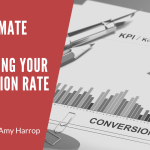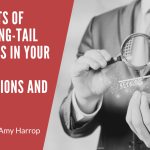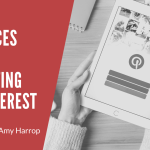 There are few decisions more momentous in self-publishing than deciding how much to charge for your book. The price you set has a direct impact on your book’s marketability. Set it too high and it can deter people from buying it. Set it too low, and you’ll miss out on the profits that will help you make your self-publishing empire a success.
There are few decisions more momentous in self-publishing than deciding how much to charge for your book. The price you set has a direct impact on your book’s marketability. Set it too high and it can deter people from buying it. Set it too low, and you’ll miss out on the profits that will help you make your self-publishing empire a success.
Of course, determining a price is a delicate business. You need to consider the work you put into the book and your overhead expenses. Print books usually come with higher price tags than digital books.
How do you know how much to charge? Where should you start? Let’s review the basics and then I’ll walk you through some simple steps you can use to determine the right price for your book.
The Basics of Book Pricing
Let’s start with the basics of book pricing by stating the obvious. Your book’s price needs to be high enough to earn you a profit!
I think it’s important to note that it can be difficult to walk the line between feeling that all the work you did on your book is justified by the price and charging so much that you price yourself out of the market. That’s a real concern. While there are plenty of people who earn a good living with self-publishing, the statistics show that the average self-published book sells only about 250 copies over its lifetime.
I think it’s a mistake to think of your book price as a way of recouping the time it took you to write it. Why? Because the truth can be discouraging.
Even if you took only 10 hours to write a book – a ridiculously short amount of time – and you wanted to recoup your time at $50 an hour, you’d need to net $500 to break even. If your royalties only add up to a couple of dollars per book, you’d need to sell a lot of copies – and most books take more than 10 hours to write!
Instead, consider the following things:
- How much the book costs to publish, including printing costs and seller fees
- How long the book is
- How valuable it is to readers
- Production quality
- How much other writers are charging for books in the same niche
- The royalties you’ll be getting
Competitor research is a must. You don’t necessarily need your price to be the same as what other authors are charging, but you will need to justify your price to readers. In other words, if you’re charging more than average for your planner, you’ll need to convince potential buyers that they’re getting their money’s worth when they buy it.
The Link Between Royalties and Price
One of the biggest considerations to keep in mind when setting a price for your book is the royalty percentage you’ll be earning with each sale. If you plan to sell your book on Amazon, you’ll have two royalty options to choose from.
- For books priced at $2.98 and under, and for books priced above $9.99, you’ll earn a 35% royalty.
- For books priced between $2,99 and $9.99, you’ll earn a 70% royalty.
To put that in perspective, if you price your book at $2.98, you’ll earn $1.04 for each sale you make. That means you’d need to sell about 500 copies to make $500.
If you go with the higher price range and price your book at $9.99, you’ll earn $6.99 in royalties for each sale you make. A higher price reduces the number of copies you’d need to sell to break even. At the highest price for the 70% bracket, you’d need to sell only 72 copies to break even.
Paying Amazon either 65% or 30% of your book’s cover price might seem like a lot, but keep in mind that traditional booksellers typically pay royalties of only about 40-55% for the books they sell. For the same price of $9.99, you’d only earn between $3.99 and $5.49 per book if you sold your book at a bookstore.
The Psychology of Pricing
There’s no element of marketing where psychology doesn’t come into play. With pricing, there are a few strategies you can use to capitalize on the mental glitches we use to assign value.
- Dropping the last digit. There’s a reason that so many books on the Amazon Kindle store have prices ending in 9. When you sell a book for $9.99, you can claim it’s less than $10. There’s a psychological benefit to setting your price just ender an amount that might be a deal-breaker for a buyer.
- Using odd numbers, which people prefer to even ones in most cases.
- Prestige pricing is an option that involves ignoring the last digit and rounding your prices up. It tends to work best for luxury products. If you’ve ever eaten in a high-end restaurant, you might have noticed this technique on the menu.
- Buy one, get one/bundling. There can be a real advantage to bundling books in self-publishing. It creates a perception of value even if the bundled price is only marginally lower than what the reader would pay for the individual items in the bundle.
Considering the psychology of pricing can help you set the best, most profitable price for your self-published book.
The Formula for Book Pricing
In most cases, it’ll be beneficial to crunch some numbers before you set a price for your book. You may need to back into the price. Here are some tips:
- If this isn’t your first self-published book, you may be able to predict sales based on what’s happened with your other books. If not, use 250 as a benchmark.
- Figure out your production cost per book. This’ll be a higher number for print publishing than it will for digital publishing.
- Determine the royalty rates for every venue where you plan to sell your book.
You can start by figuring out how much you want to earn per book and then add the other numbers in to determine the best price.
Pricing self-published books is not just about math – it’s about emotion, too. Your work is valuable, and it’s important to do the work of determining what it’s worth before you decide how much to charge for it.



